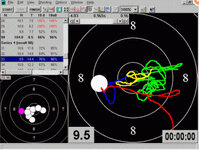What's your trigger discipline/practice and why? I haven't done any big research, the options I listed are just ones that seem common. Besides the technique, maybe share a little about the typical rifle you shoot, like total rifle weight, trigger weight, rifle type, cartridge type, etc.
Personally, I follow the "press, break, and freeze" technique I saw on the internet. Before adopting it, I had terrible trigger discipline, and I wasn't really paying attention at all to what I was doing. I was yanking and had a flinch, so when I was learning a lot of things at once.
I'm just wondering if this is the "best" method or whether I got huge gains in precision because I started from terrible, that anything was significantly better. I haven't revisited trigger control or seen many other opinions out there for practicing a purposeful trigger control.
Personally, I follow the "press, break, and freeze" technique I saw on the internet. Before adopting it, I had terrible trigger discipline, and I wasn't really paying attention at all to what I was doing. I was yanking and had a flinch, so when I was learning a lot of things at once.
I'm just wondering if this is the "best" method or whether I got huge gains in precision because I started from terrible, that anything was significantly better. I haven't revisited trigger control or seen many other opinions out there for practicing a purposeful trigger control.

